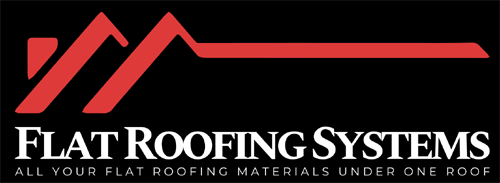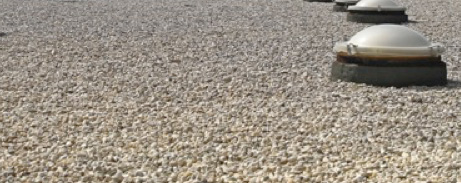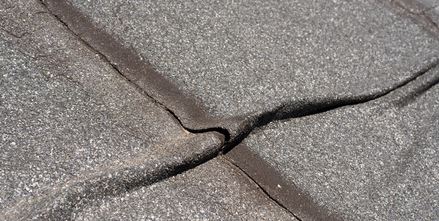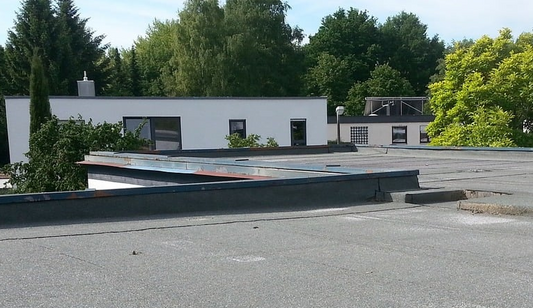You're considering GRP fibreglass as a flat roofing material because of its exceptional combination of high strength, low weight, and adaptability, making it an attractive option for your roofing needs.
It offers a cost-effective and reliable solution, with a proven track record of durability and longevity, lasting 50 years or more. GRP fibreglass outperforms traditional felt roofing in respect of performance and longevity, and its seamless installation process guarantees a watertight finish.
With its high strength-to-weight ratio, resistance to condensation, mould, and rot, and low maintenance requirements, GRP fibreglass is a superior choice for flat roofing - and there's more to explore about its benefits and applications.
Key Points
- GRP fibreglass offers exceptional strength-to-weight ratios, making it an ideal choice for flat roofing applications.
- It is durable and long-lasting, with a lifespan of 50 years or more, outperforming traditional felt roofing.
- GRP fibreglass is adaptable, allowing it to be moulded to fit around obstacles, making it suitable for unique roofing needs.
- It requires low maintenance, is resistant to condensation, mould, and rot, and provides a watertight finish that eliminates water damage risks.
Material Overview and Benefits
What makes GRP fibreglass an attractive material for flat roofing is its unique combination of high strength, low weight, and adaptability, which sets it apart from other roofing options.
As you consider GRP for your flat roofing needs, you'll appreciate its durability and versatility.
Made from a composite of glass fibre mat and polyester resin, GRP offers exceptional strength-to-weight ratios, making it an ideal choice for roofing applications.
You'll also benefit from GRP's cost-effectiveness and trusted performance.
Having been used by NASA for spacecraft and in various industries for decades, GRP has a proven track record of reliability.
Its adaptability allows it to be moulded to fit around obstacles, making it suitable for unique roofing needs and applications.
Plus, GRP is durable and long-lasting, with a lifespan of 50 years or more.
With GRP fibreglass, you can have peace of mind knowing that your roof is protected from the elements and will withstand the test of time.
Comparison With Felt Roofing
When it comes to choosing a flat roofing material, you may be considering felt roofing as an option, but how does it stack up against GRP fibreglass in terms of performance and longevity?
The truth is, GRP fibreglass outperforms flat roof felt in several key areas. For starters, GRP fibreglass has an expected lifespan of 50 years, far exceeding felt roofing's 10-30 year lifespan by a considerable margin.
Additionally, GRP roofing is cold-applied, seamless, and malleable during installation, making it a more durable and reliable option.
In contrast, felt roofing is prone to condensation, mould, and rot, whereas GRP roofing is resistant to these issues due to its waterproofing properties.
You'll also find that GRP roofing requires low maintenance, whereas felt roofing is more susceptible to cracking and damage from foot traffic, necessitating more frequent repairs.
It's no wonder professionals often prefer GRP roofing over felt roofing due to its superior durability, waterproofing, and low maintenance requirements.
When it comes to choosing the right flat roofing material, it's clear that GRP fibreglass is the better option.
Health & Safety Considerations
As you weigh the benefits of GRP fibreglass flat roofing materials, it's also important to ponder the health and safety implications of its installation and maintenance. While GRP fibreglass is generally a safe material, there are some key considerations to keep in mind.
When handling GRP fibreglass, you should wear protective gear, including gloves, safety glasses, and a mask to prevent skin and eye irritation. Additionally, it's vital to guarantee good ventilation when working with resin and hardeners, as they can emit harmful fumes.
Some key health and safety considerations to keep in mind include:
- Guaranteeing a secure and stable working platform to prevent falls
- Avoiding skin contact with resin and hardeners, and washing hands thoroughly after handling
GRP Fibreglass Roofing Advantages
GRP fibreglass roofing offers a multitude of advantages that make it an attractive option for homeowners and builders alike.
For starters, it's an extremely durable material with a lifespan of 50 years, far surpassing traditional felt roofing which typically lasts 10-30 years. Additionally, GRP fibreglass is adaptable and versatile, making it a cost-effective waterproofing solution for various applications. Its high strength-to-weight ratio and seamless installation process guarantee it's resistant to rain, snow, and UV rays.
What's more, GRP fibreglass roofing is environmentally friendly and recyclable, making it a sustainable choice for those looking to reduce their carbon footprint.
You can even get complete grp fibreglass roof kits , which include everything you need for your project.
You'll also appreciate that it requires very little maintenance, providing a watertight finish that gives you peace of mind and eliminates the risk of costly water damage. With GRP fibreglass roofing, you can rest assured that your property is protected from the elements, and you're doing your part for the environment.
Installation and Maintenance
Proper installation and regular maintenance are essential to releasing the full potential of a GRP fibreglass flat roof, ensuring it provides a watertight finish and lasts for decades to come.
When you hire a professional installer, they'll prepare a clean and dry surface, apply resin and fibreglass matting layers, and allow the roof to cure for a strong and waterproof finish.
However, poor installation can lead to problems like blistering, delamination, and ponding water, which is why it's pivotal to hire a skilled and experienced installer.
To keep your GRP fibreglass roof in top condition, you'll need to:
- Regularly inspect your roof for signs of wear or damage
- Clean gutters and drains to prevent water buildup
- Avoid walking on the roof, as this can cause damage to the surface
Choosing the Right Provider
When selecting a provider for your GRP fibreglass flat roof, it's crucial to research local building material suppliers in the UK that can meet your specific needs and budget.
You'll want to compare prices and services offered by different providers to certify you get the best value for your money. GRP roofs typically cost between £70-£390 per square meter, so it's imperative to find a provider that fits your budget.
Beyond price, you should also check the quality of materials and workmanship by reading reviews, asking for referrals from previous customers, and verifying the provider's certifications and accreditations.
Look for providers that offer an extensive warranty and after-sales support, including a guarantee of at least 30 years for GRP roofs. This will give you peace of mind and protection against defects or issues.
Finally, consider providers that are members of reputable industry associations, such as the National Federation of Roofing Contractors, to guarantee they adhere to industry standards and best practices.
Rounding Up
You've made it to the end of this guide, and now you're equipped with the knowledge to make an informed decision about using GRP fibreglass as your flat roofing material.
With its durability, low maintenance, and cost-effectiveness, it's a great option.
Just remember to choose a reputable provider and follow proper installation and maintenance procedures.
By doing so, you'll be able to enjoy the benefits of GRP fibreglass roofing for years to come.




